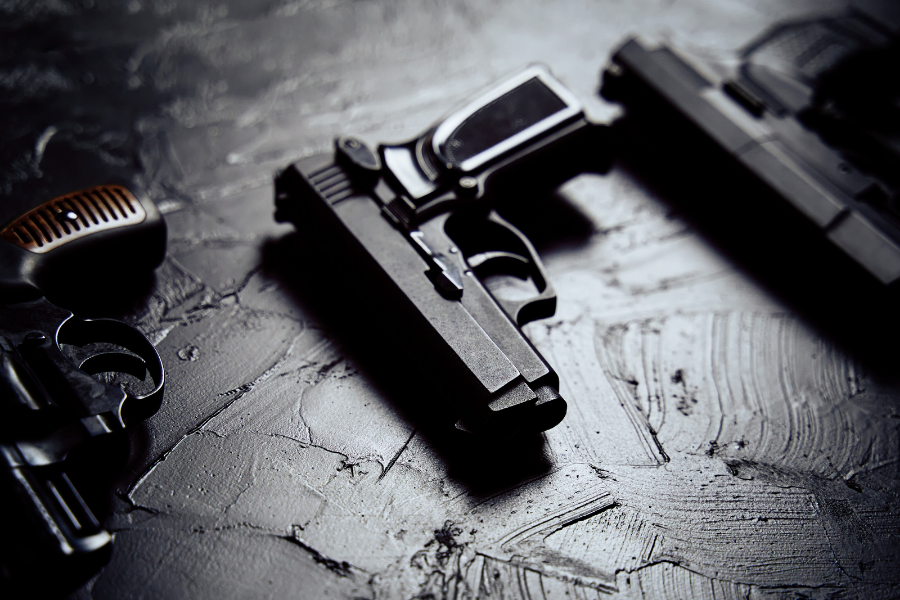Across the United States, more children and teens are dying from gun violence than from any other cause. It’s a grim and unsettling reality that reflects not only a national crisis, but also one that varies dramatically depending on where a child lives.
A recent national study has drawn a clear connection between the strength of a state’s gun laws and the number of young lives lost to firearms. States with looser firearm regulations saw significantly higher rates of child and teen deaths than those with stricter laws. The study reviewed firearm-related deaths from 2011 to 2023 and found that nearly 6,000 additional deaths occurred in states with the most lenient gun policies compared to what might have been expected under previous laws.
The researchers found that about 17,000 pediatric firearm deaths were projected for that period, but the real number exceeded 23,000. These deaths weren’t evenly spread across the country. States with stronger gun control measures—such as safe storage laws, background checks, and limits on carrying weapons in public—were more likely to see decreases or minimal changes in child gun deaths. In contrast, most states with permissive gun laws saw increases, some of them sharp.
The disparities extended beyond geography. Black children and teens experienced the highest increases in firearm-related deaths in states with lax gun laws. While rates also rose in stricter states, the increases were significantly smaller.
The message from the data is clear: policy matters. And when it comes to protecting children, the stakes couldn’t be higher.
What’s Behind the Numbers?
The rise in firearm deaths among children has happened in the wake of major legal and political shifts. A pivotal Supreme Court ruling in 2010 overturned a handgun ban in Chicago, opening the door for states to expand access to firearms. Since then, many states have moved to reduce restrictions, with some even eliminating permit requirements for carrying guns in public.
In Louisiana, for instance, firearm deaths among children increased dramatically—making it the state with the highest pediatric gun death rate in the country. Louisiana recently passed a permitless carry law and struck down proposed legislation aimed at promoting safe gun storage.
Similar stories play out in other permissive states like South Carolina and Ohio, where death rates have also climbed. In Ohio, for example, firearm death rates among children nearly doubled over the past decade.
Some lawmakers continue to argue that requiring safe storage of firearms or other regulations infringes on their rights. But public health experts and trauma doctors say the consequences of inaction are devastating—and preventable.
A Public Health Crisis Ignored
Despite the growing toll, gun violence among youth has been left out of recent national health reports. Medical experts and researchers say this omission reflects a broader reluctance to treat gun violence as the public health emergency that it clearly is.
Doctors who treat young shooting victims see firsthand the trauma and loss. They describe having to tell parents their child didn’t survive, even though the injury might have been preventable with basic safety measures or better laws. Many advocate for reforms such as mandatory safe storage, stronger background checks, and more support for families in high-risk areas.
The success of past public health campaigns—like those around car seats and seatbelts—proves that lives can be saved through smart regulation and education. Experts argue that the same approach could dramatically reduce gun deaths among children, if only it were prioritized.
Culture and Community Matter
Beyond legislation, cultural attitudes toward firearms also shape outcomes. In places where guns are seen as a necessary part of home defense, efforts to introduce safe storage laws often meet fierce resistance. Some argue that locking up a gun makes it harder to protect a household in an emergency, despite evidence showing that unsecured weapons are more likely to cause accidental injuries or be used in suicides.
Still, there’s growing momentum around grassroots and community-based solutions. Hospital intervention programs, neighborhood outreach, and peer support networks are helping to break cycles of violence and provide support to families affected by gun trauma.
One powerful example is a nonprofit started by a Cleveland mother who lost her son to gun violence. Her group offers grief counseling, shares stories in schools, and advocates for responsible gun ownership and storage. She believes education, conversation, and community engagement are just as crucial as legislative efforts.
The Bigger Picture
While gun rights remain fiercely protected in many parts of the country, more families are grappling with the painful consequences of unrestricted access to firearms. For children and teens, the threat is real and growing.
Whether it’s a toddler who finds an unsecured weapon, a teen caught in crossfire, or a young person facing a mental health crisis with easy access to a gun, the outcome is often the same—tragic and irreversible.
The conversation around guns in America is deeply political, but for many families, it’s personal. As one expert put it, pulling a trigger doesn’t just end one life—it changes countless others.
The question facing the country now isn’t whether gun violence is a problem for America’s youth. The data has already answered that. The real question is: what will we do about it?


